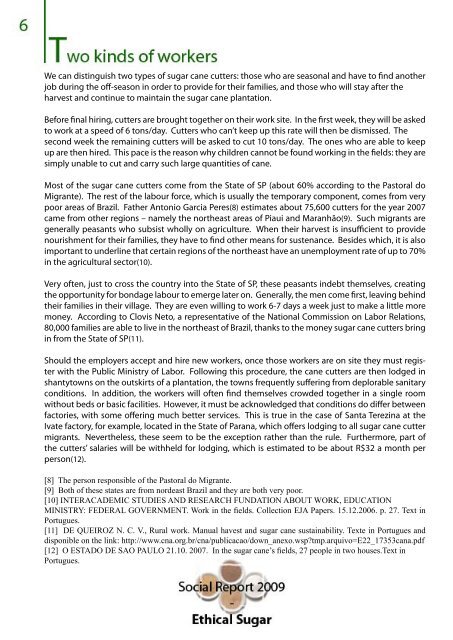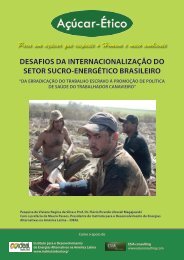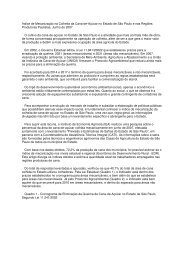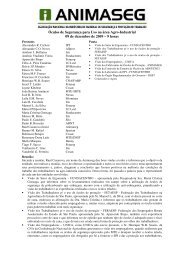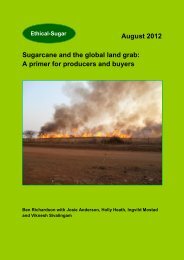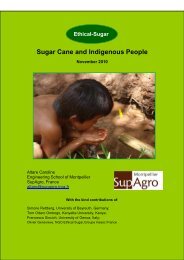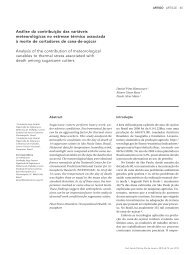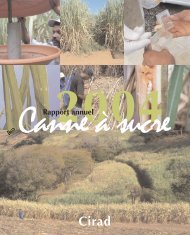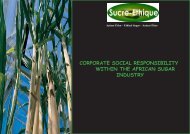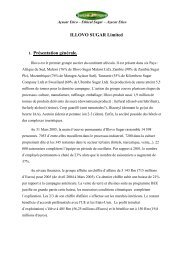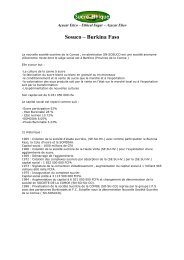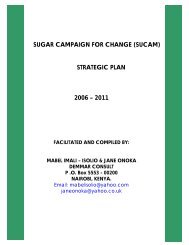Social Report Brazil 2009 - Sucre Ethique
Social Report Brazil 2009 - Sucre Ethique
Social Report Brazil 2009 - Sucre Ethique
You also want an ePaper? Increase the reach of your titles
YUMPU automatically turns print PDFs into web optimized ePapers that Google loves.
We can distinguish two types of sugar cane cutters: those who are seasonal and have to find anotherjob during the off-season in order to provide for their families, and those who will stay after theharvest and continue to maintain the sugar cane plantation.Before final hiring, cutters are brought together on their work site. In the first week, they will be askedto work at a speed of 6 tons/day. Cutters who can’t keep up this rate will then be dismissed. Thesecond week the remaining cutters will be asked to cut 10 tons/day. The ones who are able to keepup are then hired. This pace is the reason why children cannot be found working in the fields: they aresimply unable to cut and carry such large quantities of cane.Most of the sugar cane cutters come from the State of SP (about 60% according to the Pastoral doMigrante). The rest of the labour force, which is usually the temporary component, comes from verypoor areas of <strong>Brazil</strong>. Father Antonio Garcia Peres(8) estimates about 75,600 cutters for the year 2007came from other regions – namely the northeast areas of Piaui and Maranhão(9). Such migrants aregenerally peasants who subsist wholly on agriculture. When their harvest is insufficient to providenourishment for their families, they have to find other means for sustenance. Besides which, it is alsoimportant to underline that certain regions of the northeast have an unemployment rate of up to 70%in the agricultural sector(10).Very often, just to cross the country into the State of SP, these peasants indebt themselves, creatingthe opportunity for bondage labour to emerge later on. Generally, the men come first, leaving behindtheir families in their village. They are even willing to work 6-7 days a week just to make a little moremoney. According to Clovis Neto, a representative of the National Commission on Labor Relations,80,000 families are able to live in the northeast of <strong>Brazil</strong>, thanks to the money sugar cane cutters bringin from the State of SP(11).Should the employers accept and hire new workers, once those workers are on site they must registerwith the Public Ministry of Labor. Following this procedure, the cane cutters are then lodged inshantytowns on the outskirts of a plantation, the towns frequently suffering from deplorable sanitaryconditions. In addition, the workers will often find themselves crowded together in a single roomwithout beds or basic facilities. However, it must be acknowledged that conditions do differ betweenfactories, with some offering much better services. This is true in the case of Santa Terezina at theIvate factory, for example, located in the State of Parana, which offers lodging to all sugar cane cuttermigrants. Nevertheless, these seem to be the exception rather than the rule. Furthermore, part ofthe cutters’ salaries will be withheld for lodging, which is estimated to be about R$32 a month perperson(12).[8] The person responsible of the Pastoral do Migrante.[9] Both of these states are from nordeast <strong>Brazil</strong> and they are both very poor.[10] INTERACADEMIC STUDIES AND RESEARCH FUNDATION ABOUT WORK, EDUCATIONMINISTRY: FEDERAL GOVERNMENT. Work in the fields. Collection EJA Papers. 15.12.2006. p. 27. Text inPortugues.[11] DE QUEIROZ N. C. V., Rural work. Manual havest and sugar cane sustainability. Texte in Portugues anddisponible on the link: http://www.cna.org.br/cna/publicacao/down_anexo.wsp?tmp.arquivo=E22_17353cana.pdf[12] O ESTADO DE SAO PAULO 21.10. 2007. In the sugar cane’s fields, 27 people in two houses.Text inPortugues.


